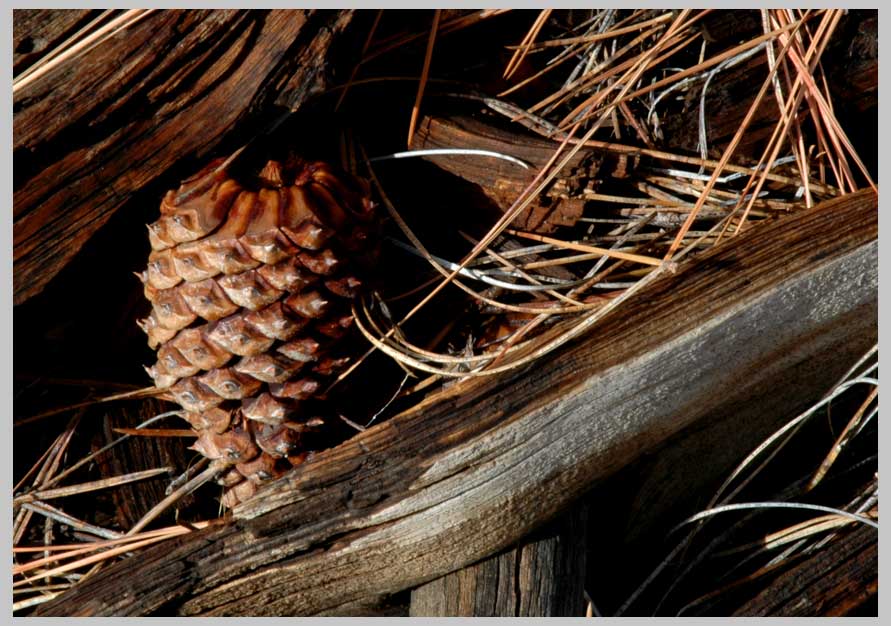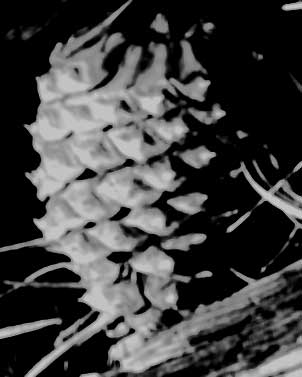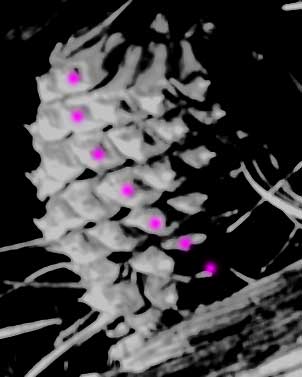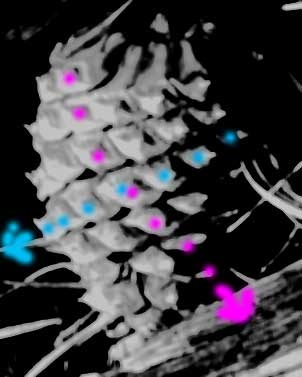
Ponderosa Cone, with dry needles (Pinus ponderosa) . ..
Notice that the scales have prickly tips!
On the road in the American Northwest.

Ponderosa Cone, with dry needles (Pinus ponderosa) . ..
Notice that the scales have prickly tips!
On the road in the American Northwest.
Pinecones & Form as Movement . . .
If you've never looked closely at the form of pinecone,
you might be surprised to see that it has a lot to teach us.
Here's am outline of the ponderosa cone
pictured above:

Pinecones are a kind of archetype
of complex form that emerges out
of two simpler spiral movements.
One spiral turns right:

The other spiral turns left:

The two spirals fit together (harmony)
in a remarkable composite (simplex = one-fold;
complex = many-fold).

In both poetry and music, this
gives us a crystal clear generative model of form that
emerges naturally out of the weaving together
of two simpler movements.
Gregory Bateson was fond of saying,
and I'm quoting here from memory so
forgive me if I change his own words somewhat,
that "a sacrament is the outward manifestation
of an inward spiritual grace."
That's exactly right. An inward spiritual grace.
The handiwork of some profound natural intelligence.
Where our description ends, along the forest trail,
that is where when we our lucky a new spirit of religion might begin.
Why is it new? Well, only because it is not in books, not
in buildings like churches, and it doesn't really have anything
to do with belief. It has more to do with how natural beauty—an
inward spiritual grace—
brings thought, and music, and poetry,
and all imagery to a stop; It has to do more with when we suddenly sense
ourselves resonating with something both deep inside and
vastly beyond ourselves.
All in a pinecone we find along a mountain forest path and
can hold in our hands.
NEW: To view / purchase different sized prints of this image at the
PhotoWeek Store click here. view as SLIDESHOW |
[http://www.shutterfly.com/pro/cliffcards/photoweek]